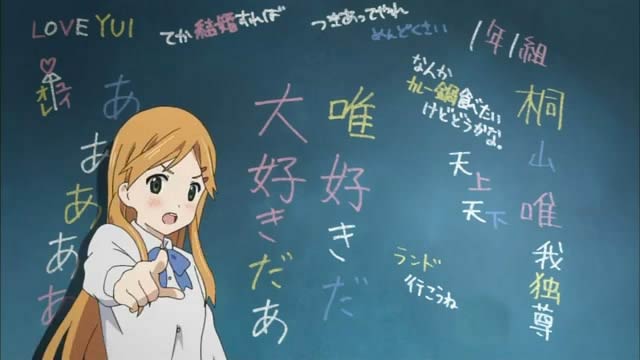I came to Japan in 1991, during the first George Bush presidency, intending to stay “for a year or two.” Then the universe intervened: I met my future wife, then the Internet happened, and I founded J-List in 1996.
One reason my wife and I were attracted to each other was our great love each other’s language, and our mutual respect at the effort we each had spent on learning those languages. When our son and later our daughter were born we knew we wanted to raise them bilingually, so they didn’t have to work as hard at learning both languages as we did. I recently received some questions about how I raised bilingual kids in Japan on Reddit, so I thought I’d write a post on the subject here.
Note that this is a post written for people in a similar situation to me, e.g. a native English speaker in Japan or a similar country where English isn’t the majority language. It might not be helpful for people in other linguistic situations…or it might!

Cunning Linguistics
Right off the bat, I had a secret weapon. When I went to SDSU (San Diego State University), I got an English major with a minor in Japanese, and because I thought it would help me get employment as a language teacher, I took a minor in linguistics with a focus on bilingualism and child language acquisition. I had studied, academically at least, “successful” bilingual countries like Canada, Belgium, and Hong Kong, and I had a few ideas about how I wanted to proceed with my own kids.
Dr. Seuss To the Rescue
I got off to a strong start, introducing them to the beloved books that were a tradition in my own family: The Giving Tree, Where the Wild Things Are, the poems of Winnie the Pooh creator A.A. Milne, the Madeline books plus all the works of Dr. Seuss.
Marvin K. Mooney, I don’t care how,
Marvin K. Mooney, will you please go now?
This “English book at bedtime with Dad” was balanced out by a steady diet of normal Japanese kid stuff, from Doraemon to Sazae-san to Chibi Maruko-chan, during other parts of the day. Compartmentalizing is important.
For the first few years, bilingual children grow up kind of learning both languages at once, as it takes time to separate the two in the brain. Everyone around us, from neighborhood friends to Japanese grandparents to teachers at preschool, had to get used to this oddity and learn whatever English words and phrases my kids were going to experiment with that week. Children are very “playful” when it comes to using language, and I remember observing my son as he toyed with combining English and Japanese, telling me the bath we’d just been in was “cold-katta,” mixing the English word with the Japanese past tense.
Still, progress was slow. My kids would visit their American grandmother in San Diego and jabber at her in Japanese for hours, not realizing that no one was understanding them. I would use various tricks to try to get them to speak English to me, including pretending not to understand Japanese or saying things like, “If you want me to do this for you, ask me again in English.” This had the odd result of making my kids very independent, since they realized they could take care of whatever needed doing themselves without relying on me.
Always wanting to always keep positive energy flowing where English was concerned, I asked my mother to send us some Mad Libs books, which I’d work on with the kids, who would happily supply words like “stinky” “slimy” and “stupid” ending in endless hours of laughter. Every little bit helps.

Raising Bilingual Kids With Anime
One night I was watching the Magic Knight Rayearth U.S. DVD box set that a friend had lent me. It was late at night, and my two-year-old daughter woke up for a glass of water. When she saw what I was watching, she forgot about water and sleep and plopped down beside me. I’d been watching it in Japanese, but a flash of insight told me to switch over to the English dub. I said, “I’m sorry, these DVDs are from America. If you want to watch with me you have to watch in English.” I ended up watching both seasons of the Magic Knight Rayearth with my kids in English, which gave them a good basis in the language.
So I established a rule in our house, that all DVDs would only be in English, imported from the U.S. rather than purchased locally in Japan. Anything they wanted to watch on media, from anime to Harry Potter to classic Disney to The Incredibles, had to be in English. This plan worked so well that my kids didn’t know that Japanese language DVDs existed until they were nearly in elementary school. Once my son watched Japanese-dubbed Toy Story at school, and rushed home to tell us that Woody and Buzz could speak Japanese.
The Importance of Feeling Connected
In my second year of Japanese study at SDSU, one of our teachers changed her lesson approach one day. Rather than having us study more vocabulary words, she distributed a typed sheet with the lyrics to a song called Kampai [YouTube link with Romanized lyrics], a popular song every Japanese person knows because it’s frequently sung at weddings. We were confused by our teacher’s actions at the time, but in retrospect I really liked what she had done: given us all an “emotional connection” with Japan and its people that was potentially a lot more useful than whether we knew how to correctly conjugate another dozen verbs in the informal past tense.
When raising my own kids, I wanted to make sure they felt “connected” to America, knowing whatever they’d be expected to know to consider themselves American kids. In addition to books like Dr. Seuss, mentioned above, I made sure they had the proper appreciation for Scooby Doo, Shrek, The Simpsons, Hanna Montana, High School Musical, and every other form of basic American pop culture. Now that they’re older, I often drag them around the U.S., so they can get to know the history and geography of my home country better.
Of course, there’s no more important connection and family, and part of our success at raising bilingual kids sending them to spend the summer with their grandmother in San Diego, where they would interact with my family there and become comfortable at using English. I found sending the kids to summer camp in the U.S. to be especially effective, though they whined as kids usually do.
Picking a Side
From the start, I was okay with the idea of our kids being 70% “Japanese” and 30% “American,” or the other way around, as long as they weren’t perfectly 50-50 adjusted to both countries. The reason for this was, I had known someone who was perfectly “balanced” between the two countries, the wife of a former employer, and the result was that she didn’t feel particularly connected to either the U.S. or Japan, and came off as not belonging properly to either group. This struck me one of the saddest things possible for a human being, to not have a place you can consider your “home base.” So I wasn’t upset at all when my son gravitated to having a stronger Japanese identity, while my daughter (who looks a lot like me) became more “American,” eventually opting to go to high school in Australia then university in California.
The concept of haafu—which usually refers to someone who is half-Japanese and half-Western, e.g. visibly in-between the two groups—is quite developed in Japan. On the one hand, Japanese society often puts people of mixed race on a pedestal, treating them like the best of both worlds: high-level linguistic skills, the ability to be excused from some social rules while still maintaining Japanese 常識 josuhiki, the all-important “social common sense” that all Japanese are supposed to have. Many famous models and actresses are haafu, and are widely celebrated. Some of the most enigmatic anime characters, from Asuka from Evangelion to Josuke from JoJo’s Bizarre Adventure to Yuzu from Citrus, are also haafu, which is used as a vehicle to create more interesting and compelling characters. Japan’s version of a Barbie doll is Licca-chan, a pretty blonde-haired girl who’s haafu: her father is a French musician and her mother is a Japanese fashion designer.
This is the “meme,” perhaps the Japanese version of the American idea that every Asian is a genius at math just by being born Asian. In reality, haafu kids can be in a difficult situation, depending on their environment. Do they fit in with Japanese school settings? Can they make friends and be a part of groups? Do the parents participate in PTA school events as expected, even if they’re not Japanese? Do the kids get teased in school for being different from the Japanese kids in class? (Short answer: of course, sometimes, everyone is human.)
Don’t Push It. Balance is important.
One thing to keep in mind when trying to raise bilingual children is to avoid putting pressure where it’s not wanted or helpful. As an English teacher, I’ve sadly seen times when things can backfire, like a Japanese friend in America who forced her half-American son to study Japanese, even though he described it as “torture.” (He didn’t feel any emotional connection to Japan that would have enabled him to succeed in his studies.) Or a Japanese student of mine who grew up in the U.S. then came back to live in rural Japan, where she faced, or thought she faced, pressure by her friends to never use English, lest she stands out from her classmates. Although I’d worked with the girl for many hours and knew how good her language skills were, I was saddened when she insisted in front of her friends that she knew no English at all.
Interestingly, Haruhi voice actress Aya Hirano also spent her formative years in the U.S., learning English as her first language before forgetting it after coming back live in Japan. (Source: statements the voice actress made on stage during Anime Expo in 2007). I’ve always thought that some of the issues she had in her career might have somehow been tied to her childhood, growing up without having a solid cultural grounding when she needed it most.
Conclusion
This was a post that might have held some useful ideas for anyone interested in questions about raising bilingual kids, with various thoughts on what it’s like to be haafu in the context of Japan.
Through inventiveness, raising bilingual kids in a monolingual country like Japan and enable them to feel connected to both cultures. It’s important to make the right moves and avoid putting pressure on them, and always being helpful and understanding.
Thanks for reading!














